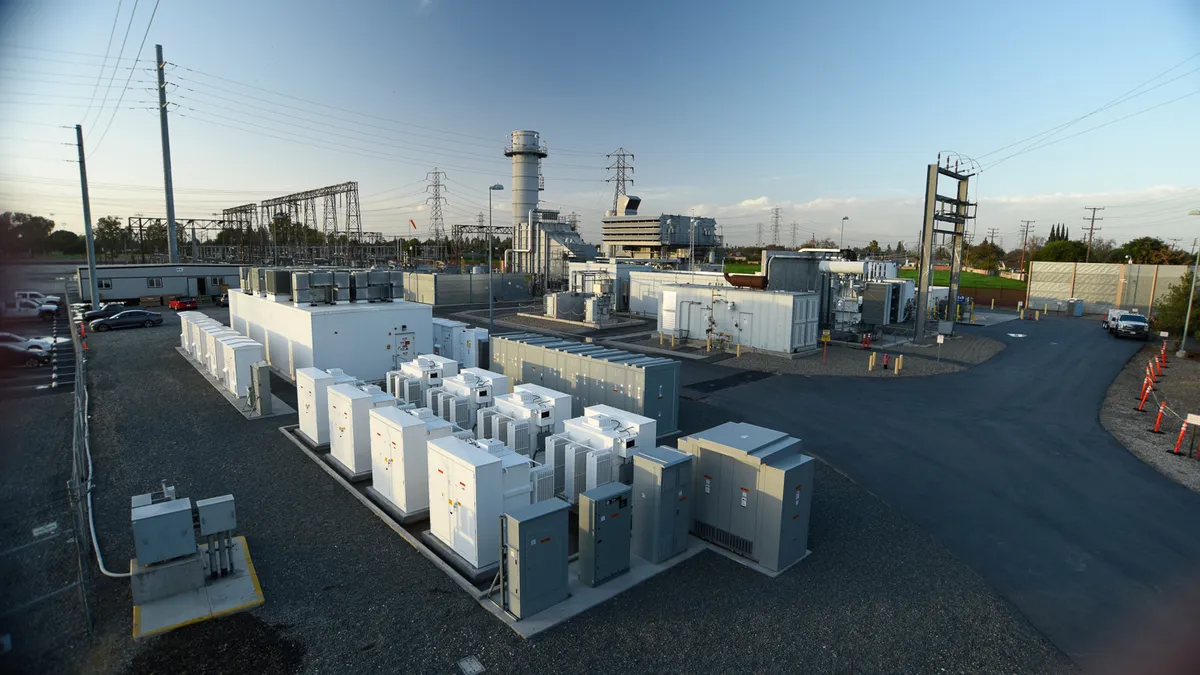Dive Brief:
- The Midcontinent Independent System Operator, Xcel Energy, AES and a group of transmission-owning utilities have asked asked the Federal Energy Regulatory Commission to reconsider its landmark storage order approved in February.
- MISO asked for clarification regarding the minimum size of storage for wholesale market participation, bid parameters, and a six-month extension on the order's deadlines. AES also asked for an extension, noting MISO is already making tariff reforms under a separate FERC order approved last year.
- The Transmission Access Policy Study Group (TAPS) and Xcel Energy also argued the order oversteps FERC's jurisdiction by mandating that energy storage resources on the distribution system be able to participate in wholesale markets.
Dive Insight:
Last month, in a move aimed at bringing storage resources into wholesale markets, FERC directed regional grid operators to devise new tariffs for storage market participation that allow the resources to provide multiple electricity market services.
On Monday, a handful of market participants, including one regional grid operator, filed for rehearing on the proposal.
MISO noted that while the commission approved an order for storage resources above 100 kW, it deferred issues about aggregations of smaller distributed energy resources to a technical conference on April 9-10. FERC, it argued, should give stakeholders more time to devise how the outcomes of that conference will affect its compliance filing on the FERC order.
Other stakeholders argued FERC's order goes too far, stepping into state jurisdiction over energy resources connected to the distribution grid.
TAPS argues FERC should require distributed storage resources to "make a binding choice" to participate exclusively either in the wholesale markets or at the retail level.
TAPS says it is seeking rehearing because regulators did not acknowledge or provide a reason for rejecting recommendations for an opt-out provision to storage rules. There is an opt-out provision in the commission's demand response rules, and TAPS argues a similar mechanism should be put in place.
Xcel makes a similar argument, writing that allowing distribution-connected storage to provide both retail and wholesale services "oversteps the limits on the Commission’s jurisdiction under the Federal Power Act by interfering in state jurisdiction over retail sales and affecting the ability to preserve distribution system reliability."
Ari Peskoe, director of the Electricity Law Initiative at Harvard Law noted in a series of tweets the TAPS and Xcel filings could potentially set up a challenge at the U.S. Court of Appeals for the District of Columbia Circuit Court if FERC rejects rehearing requests.
However, FERC, in its order last month, did say that the commission has "exclusive jurisdiction over the wholesale markets" as well as criteria for participation in those markets, "including the wholesale market rules for participation of resources connected at or below distribution-level voltages."
TAPS also argued that FERC made an error when it rejected recommendations that distributed storage resources be forced to to make a binding choice to participate exclusively either in the wholesale markets or at retail. The group says regulators must be on guard to ensure electricity is not purchased at retail by distributed storage and then resold in the into wholesale markets.
"When wholesale market prices are high, there is an obvious financial incentive to buy from a retail provider at the average price while selling into the wholesale market at the peak price," TAPS said. "Indeed, if the owner of a distributed storage resource could simultaneously purchase energy at retail and sell energy to the wholesale market in such conditions, it could reap enormous financial returns and shift costs to other retail customers—all without ever changing the physical state of charge of its storage resource."
The new storage tariffs FERC has mandated must meet several requirements, including: provide energy, capacity and ancillary services; and set a minimum size for market participation not more than 100 kW.
FERC's order was published March 8 in the Federal Register. FERC gave grid operators 270 days from publication to devise the new tariffs and a year to implement the changes after they are approved.
A previous version of this article incorrectly called Midcontinent ISO, the Midwest ISO.













